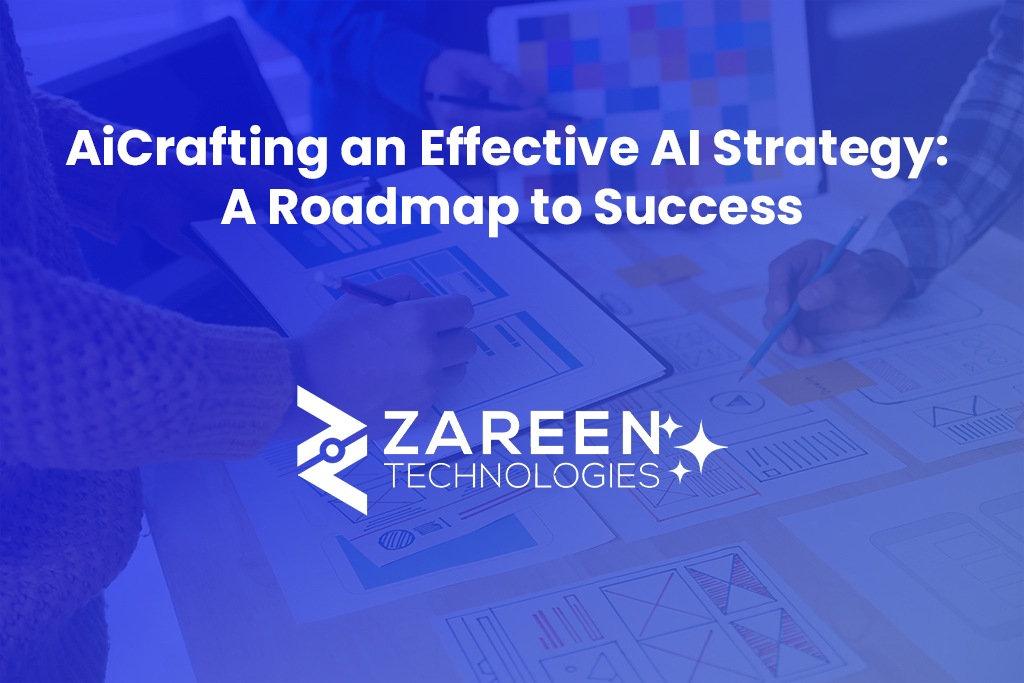Artificial Intelligence (AI) has become a cornerstone of innovation across industries, from healthcare and finance to retail and manufacturing. As organizations look to adopt AI technologies to enhance operations, streamline processes, and drive growth, developing a clear and actionable AI strategy is essential for success.
But what does a successful AI strategy look like, and how can organizations harness the power of AI to achieve their goals? In this blog post, we’ll explore the key components of an effective AI strategy and best practices for aligning AI initiatives with business objectives.
Why an AI Strategy is Essential
An AI strategy is more than just adopting cutting-edge technologies—it’s about aligning AI initiatives with business objectives and ensuring that AI investments lead to tangible, measurable results. Without a clear strategy, organizations risk making costly mistakes, underutilizing AI’s potential, or missing out on opportunities for innovation.
An AI strategy provides several benefits:
- Clear Direction: Helps businesses define how AI can drive value in specific areas.
- Competitive Advantage: Organizations with a strong AI strategy can stay ahead of competitors by leveraging data-driven insights and automation.
- Risk Mitigation: A strategic approach ensures that AI solutions are implemented responsibly, with consideration for potential risks like bias or ethical concerns.
- Scalability: AI strategies ensure that systems are scalable and adaptable as technology evolves.
Key Components of a Successful AI Strategy
1. Define Clear Business Objectives
The first step in any AI strategy is defining clear and measurable business goals. Whether you’re looking to automate processes, enhance customer experiences, or improve decision-making, it’s crucial to establish what success looks like for your organization. These goals will serve as the foundation for your AI initiatives.
- Example: A retail company might set the goal of using AI to improve inventory management and reduce waste by predicting demand more accurately.
2. Focus on Data
AI is built on data—so having a solid data strategy is essential. To develop effective AI models, your organization needs access to large volumes of high-quality, relevant data. This involves data collection, cleaning, integration, and ensuring that your data is structured in a way that can be easily processed by AI algorithms.
- Action Tip: Invest in robust data management practices, and ensure your data is ethical, unbiased, and compliant with privacy regulations (e.g., GDPR).
3. Select the Right AI Tools and Technologies
There is a vast array of AI technologies available—ranging from machine learning and deep learning to natural language processing (NLP) and robotic process automation (RPA). Selecting the right tools depends on the specific use cases and business goals you’ve identified.
- Action Tip: Evaluate different AI frameworks (e.g., TensorFlow, PyTorch, Scikit-learn) and platforms (e.g., Microsoft Azure, Google Cloud AI, IBM Watson) to find those that best align with your needs.
4. Build a Skilled Team
Building or acquiring AI talent is a critical component of a successful AI strategy. Data scientists, machine learning engineers, and AI specialists are essential for developing, implementing, and optimizing AI models. Additionally, it’s important to upskill existing employees and foster a culture of continuous learning to keep pace with AI advancements.
- Action Tip: Consider investing in training programs, hiring AI talent, or collaborating with AI consulting firms to bridge any skill gaps.
5. Integrate AI Across the Organization
AI should not be siloed within one department—it should be integrated across business functions to unlock its full potential. Whether it’s customer service, marketing, supply chain management, or finance, AI can drive efficiencies and innovation in virtually every aspect of an organization.
- Action Tip: Work cross-functionally to identify opportunities for AI deployment. Encourage collaboration between IT, business operations, and data science teams.
6. Prioritize Ethical AI
As AI technologies become more advanced, ethical considerations are becoming increasingly important. Organizations must ensure that their AI systems are fair, transparent, and accountable. This includes addressing potential issues like bias, ensuring privacy, and promoting explainability in AI-driven decisions.
- Action Tip: Develop ethical AI guidelines, regularly audit AI models for fairness, and ensure transparency in how AI systems make decisions.
7. Monitor, Evaluate, and Improve
An AI strategy is not a one-time initiative—it’s an ongoing process. Regular monitoring and evaluation of AI systems are essential to ensure they are meeting business objectives and adapting to changes in the market or environment. Continuous improvement and iteration help businesses refine their AI capabilities over time.
- Action Tip: Establish performance metrics (e.g., accuracy, efficiency, user satisfaction) to track the success of AI initiatives and make data-driven adjustments.
Best Practices for Implementing an AI Strategy
1. Start with a Pilot Project
Launching a pilot project allows you to test your AI solutions on a smaller scale before committing to a full-scale implementation. This provides an opportunity to identify challenges, measure impact, and adjust your approach without risking major investments.
- Action Tip: Choose a well-defined use case with clear objectives for your pilot project. Use it as a learning experience to refine your strategy.
2. Focus on Data Privacy and Security
As AI systems handle increasingly sensitive data, it’s essential to prioritize data privacy and security. Implement strong cybersecurity protocols and comply with privacy regulations to build trust with customers and stakeholders.
- Action Tip: Implement encryption, data anonymization, and secure access controls to protect sensitive information.
3. Embrace a Test-and-Learn Approach
AI technologies are constantly evolving, so adopting a test-and-learn approach can help you stay ahead of the curve. By experimenting with different AI models, tools, and use cases, you can discover new opportunities and refine your approach over time.
- Action Tip: Foster a culture of experimentation within your organization, encouraging teams to try new AI technologies and approaches in a controlled, iterative manner.
4. Collaborate with External Partners
AI implementation can be complex, so collaborating with external experts—such as AI consultants, technology providers, or research institutions—can help accelerate your progress. Partnerships provide access to specialized knowledge and resources that may be otherwise unavailable in-house.
- Action Tip: Leverage industry partnerships, AI communities, and third-party platforms to augment your internal capabilities and speed up AI adoption.
Key Challenges in AI Strategy Implementation
While a clear AI strategy is essential for success, organizations face several challenges in its implementation:
- Data Quality and Availability: Access to clean, structured, and relevant data is often one of the biggest obstacles to AI success.
- Talent Shortage: There is a global shortage of skilled AI professionals, which can make building an effective AI team challenging.
- Ethical and Legal Concerns: Ensuring that AI models are unbiased, transparent, and compliant with regulations is critical but can be complex.
- Integration with Legacy Systems: Many organizations struggle to integrate AI solutions with existing systems and infrastructure.
- Cost and Resource Allocation: AI implementation requires significant investment, which can be a barrier for smaller organizations.
Conclusion
Developing an effective AI strategy is critical to realizing the full potential of AI technologies. By defining clear goals, focusing on data, selecting the right tools, and fostering a culture of continuous learning, organizations can implement AI successfully and drive tangible business value. Balancing innovation with practicality and addressing key challenges along the way will help businesses unlock the transformative power of AI.
Whether you’re just starting your AI journey or refining an existing strategy, keep in mind that AI is not a one-size-fits-all solution. Tailor your approach to your organization’s unique needs, and you’ll be on your way to harnessing the power of AI for long-term success.


